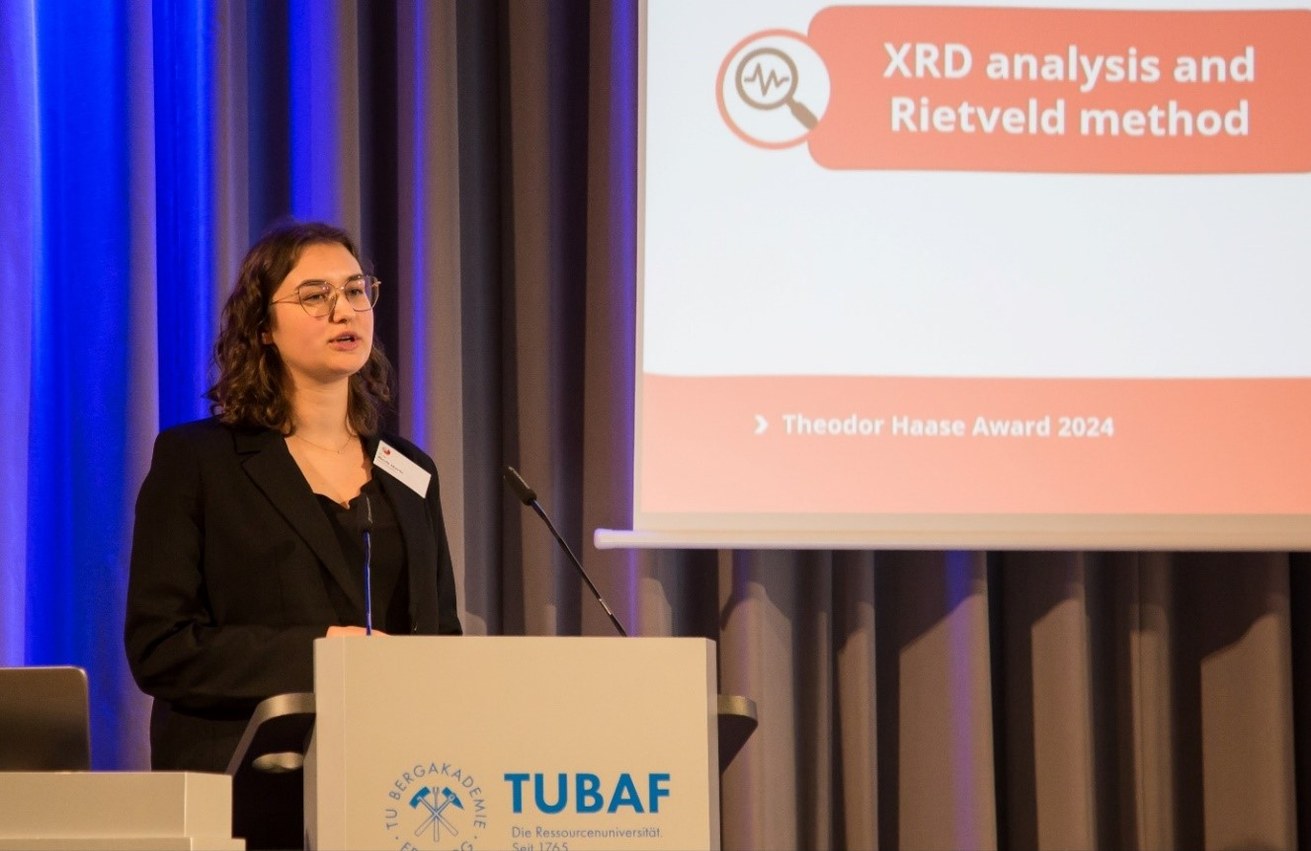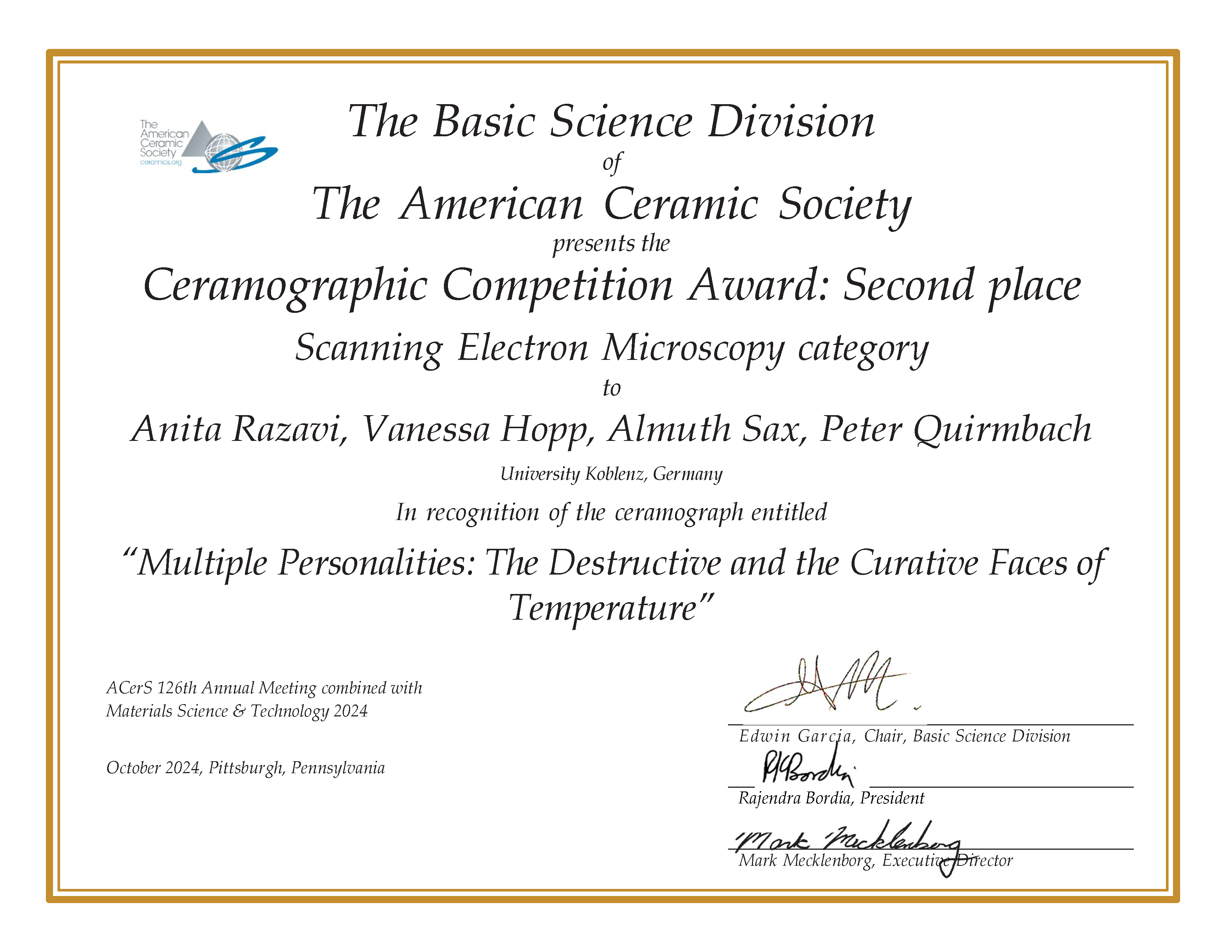UNIVERSITY OF KOBLENZ
Universitätsstraße 1
56070 Koblenz

In her paper, Razavi published experimental results from her doctoral thesis entitled "Conditioning X-ray tomography as a methodological tool for microstructural analysis of high-performance ceramics". She documented the behaviour of refractory ceramics under high temperatures at around 1,400°C by directly comparing scanning electron microscopy with computed tomography examinations. This extension of a two-dimensional into a three-dimensional microscopic representation, the first of its kind in the world, provided completely new scientific insights into the images of the same microstructure section of refractory ceramics. This allows precise statements to be made about the structure and behaviour of the materials. The sample materials were developed and provided by Calderys Deutschland GmbH, Neuwied.
Nicole Moritz, M. Ed., student assistant in the Technical Chemistry group since completing her Master's thesis, was awarded the Theodor Haase Prize of the TU Bergakademie Freiberg on 11 December 2024 for her Master's thesis entitled "Solid-state NMR spectroscopic investigation of hydrated refractory cements. Correlation of the1H,27Al and29Si-NMR signals with results from XRD analysis" was honoured. This prize is awarded annually by the TU Bergakademie Freiberg for an outstanding academic master's thesis with regard to innovative solutions and independence.
Moritz will be an academic member of the working group from 2025. She will also be a fellow at the Max-von-Laue Institute of Ceramic Materials Research Training Group and will receive a scholarship from the Alexander Tutsek-Stiftung, Munich, for the duration of her doctorate.
Background information
With more than 11,000 members from 75 countries, the American Ceramic Society (ACerS) is the largest ceramic professional association in the world. As part of the competitions at its annual conference, the ACerS, represented by its Basic Science Division, organises the "Ceramographic Competition and Roland B. Snow Award". The use of microscopy and microanalysis in the scientific investigation of ceramic materials is assessed within five categories, such as optical microscopy, scanning electron microscopy (SEM), transmission electron microscopy (TEM), etc., and the three best entries from the global scientific working groups are honoured.
